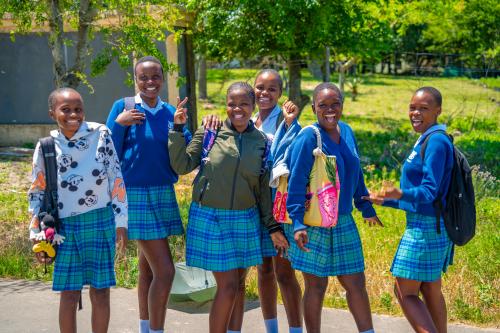Although COVID-19 infection rates in Africa have been significantly lower than initially predicted, many development experts postulate that the pandemic’s economic upheaval threatens to erase up to a decade’s worth of development progress in the region. In Chapter 3 of the Brookings Africa Growth Initiative’s Foresight Africa 2021, Jakkie Cilliers and Stellah Kwasi address the pandemic’s impact on Africa’s development goals and how to respond to this unprecedented shock.
According to the authors, diminished tax revenues, remittances, foreign direct investment, and foreign aid have hampered economic growth and local governments’ ability to maintain pre-COVID essential services, which imposes severe ramifications for the populace and the region’s development goals. In light of this, no sub-Saharan African nation besides Cabo Verde is on track to achieve the lead Sustainable Development Goal of eradicating extreme poverty—defined as living on less than $1.90 per day. Given expectations of roughly 4 percent annual average economic growth for the continent, the authors project that extreme poverty will fall by only 5 percentage points, leaving one-third of Africa’s population (1.7 billion people) subsisting on less than $1.90 per day.
However, the authors contend that the pandemic can be leveraged as a turning point for the continent’s economy and quality of life standards by harnessing Africa’s “large human capital endowment,” in which they emphasize the region’s improved economic productivity, enhanced job creation, and rising working-age population. The size disparity between Africa’s and North America’s working-age populations (ages 15-64) has been enormous, but the gap has been progressively closing and convergence is projected to occur around 2050 (Figure 1). As seen in the figure, approximately 50 percent of the African population is within the working-age range, roughly 10 percentage points fewer than North America and the world average. The authors suggest the implication of a relatively small working-age population is a high ratio of dependents to workers, which inhibits income growth. However, they forecast a steady increase and convergence of Africa’s working-age population, making the region poised for tremendous growth. But in order to materialize the African labor force’s growth potential, the region’s working-age population must be augmented by high-quality human capital via education and vocational skills training as well as concerted efforts for job creation.
Figure 1. Working-age populations in sub-Saharan Africa and North America, 2000-2050
Source: Foresight Africa 2021, Chapter 3.
Figure 2 shows the substantial progress that Africa has made across an array of development indicators in recent decades. In the 15 years leading up to the pandemic, gross primary enrollment increased by 34 percent to nearly 100 percent. Incidence of HIV has decreased by 75 percent.
Unfortunately, write the authors, the pandemic has threatened to undercut the region’s achievement of nearly full enrollment in primary education due to limited accessibility to electricity and connectivity for roughly half of sub-Saharan Africans. As distance learning has become a key feature of education delivery during the pandemic, these infrastructure challenges threaten equitable access to high quality education. Before the pandemic, primary school enrollment had reached 98.9 percent in the region (Figure 2). However, distance learning’s dependence on electricity and the internet remains a challenge for African students. Although access to electricity has improved, only about half of the population had access to electricity in 2019. Compare this to South Asia and Latin America, where 88 and 98 percent of the population, respectively, have access to electricity.
Figure 2. Human development indicators in sub-Saharan Africa
Source: Foresight Africa 2021, Chapter 3.
Education plays an important role in enabling poverty alleviation via producing a productive, prosperous, and competitive African labor force. To address this learning crisis, the authors suggest bolstering investment in key infrastructure that supports the transformative benefits of technology and that can protect and accelerate Africa’s development progress.
For more on COVID-19’s impact on the African economy, read or listen to:
- “How Africa can emerge stronger after COVID-19”
- “Understanding the impact of the COVID-19 outbreak on the Nigerian economy”
- “Global partnerships for an African recovery”
For more on the diverse development issues provoked by the pandemic, read:
For more on digitization, education, and labor skills in Africa, read:
The Brookings Institution is committed to quality, independence, and impact.
We are supported by a diverse array of funders. In line with our values and policies, each Brookings publication represents the sole views of its author(s).








Commentary
Figures of the week: Addressing COVID-19’s disruption to African development progress
February 19, 2021